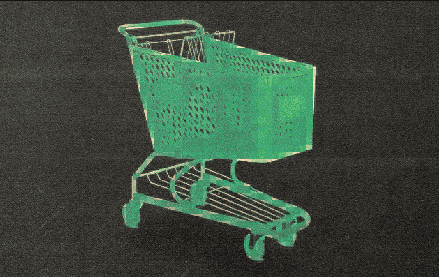Join us Dec. 1-3 in New Orleans for the Digiday Programmatic Marketing Summit
Anti-fraud measure ads.txt is coming to mobile apps but very slowly
A little more than a month since the industry’s anti-fraud effort was officially extended to mobile in-app ads, adoption for app-ads.txt among mobile apps lags. Roughly 4% of the top mobile apps have adopted app-ads.txt, according to PubMatic, which has developed a crawler to monitor adoption among the mobile apps that use its supply-side platform to sell ads.
However, ad tech firms — including sell-side platforms PubMatic and InMobi, demand-side platform Centro and ad exchange EMX Digital — plan to start enforcing app-ads.txt shortly in hopes of spurring more app developers to adopt the initiative and attracting more money from advertisers wary of rising in-app ad fraud.
As with ads.txt, which rolled out in May 2017 to curb domain spoofing and arbitrage in the web advertising market, enforcement of app-ads.txt will happen in phases. Instead of penalizing mobile apps that have yet to adopt app-ads.txt, the companies’ initial enforcement phase will be concerned with those apps that have uploaded app-ads.txt files.
As soon as May 1, PubMatic will begin to reject bid requests from apps that have uploaded app-ads.txt files but do not list the SSP as an authorized seller or reseller on those files, according to Eric Bozinny, director of inventory quality at PubMatic. By the end of the second quarter, InMobi plans to similarly reject bid requests from apps that have app-ads.txt files but do not list the SSP on those files, according to Sergio Serra, senior product manager for programmatic at InMobi.
Centro will mirror PubMatic’s and InMobi’s enforcement of app-ads.txt but from the buy side. The DSP plans to release a filtering tool sometime in the second quarter that will check if apps have uploaded an app-ads.txt file and limit bids for that app’s inventory to the authorized sellers and resellers listed on the app-ads.txt file, according to Ian Trider, director of RTB platform operations at Centro.
EMX Digital will raise the bar in the third quarter when it plans to require all apps to have uploaded app-ads.txt files listing the company in order to sell their inventory through its ad exchange. While the company does not plan to enforce app-ads.txt in this way until next quarter, EMX Digital is already making app-ads.txt adoption a prerequisite for new apps that it is adding to its exchange, according to Michael Zacharski, CEO of EMX Digital.
By moving to enforce app-ads.txt, ad tech firms hope to prod developers to adopt the anti-fraud initiative, which may be even more important for mobile in-app advertising than its forebear was for web advertising. The number of attempts to defraud advertisers buying mobile in-app ads increased by 800% in 2018, according to DoubleVerify.
App-ads.txt aims to mitigate app spoofing — or the ability of fraudsters to disguise themselves as a given app in order to siphon advertisers’ dollars — by requiring apps to list the companies that are authorized to sell their inventory. This would conceivably give programmatic advertisers enough peace of mind that they might spend more money on in-app ads. According to a recent Digiday Research survey of 206 ad buyers, 31% said they plan to increase their mobile in-app ad spending as a result of app-ads.txt.
There’s an important caveat: enough mobile app developers will first need to adopt app-ads.txt to attract more ad dollars from advertisers. Ad buyers are keeping tabs on app-ads.txt adoption, but at this point “with adoption so low it is too early to determine if it will become a scalable differential for buyers,” said Amanda Martin, vp of enterprise partnerships at programmatic agency Goodway Group.
While the current level of adoption among mobile apps is lower than programmatic buyers and sellers would like, it is roughly in line with where adoption stood at this point for the original ads.txt, according to ad tech execs. Based on app-ads.txt adoption to date and the adoption trend for ads.txt, app-ads.txt adoption should reach 10% of top mobile apps by the end of Q2, according to PubMatic. InMobi hopes to see the figure hit 90% of mobile apps by the end of this year.
App-ads.txt adoption among mobile apps has been scant largely because there has not been much incentive for app developers to make an effort to learn how to adopt app-ads.txt.
Adopting app-ads.txt largely follows the same process that publishers had to follow to adopt ads.txt. However, many mobile apps may not have had to go through the process of adopting the original ads.txt. Therefore, a barrier to adoption is app developers lacking the understanding of how to adopt app-ads.txt, which mirrors an early friction point with ads.txt adoption among web publishers. “We got feedback from a pretty major premium app saying, ‘Hey, what do we do with app-ads.txt,” said Bozinny.
Compounding the education problem, mobile apps have not yet had much incentive or pressure to adopt app-ads.txt. Given that app-ads.txt was only officially introduced in March 2019, companies have yet to enforce app-ads.txt in a way that would impact the businesses of any holdouts. But, in light of the ad tech firms’ enforcement plans, that is about to change.
More in Marketing

Walmart, Target, Kroger swap name brands for private labels in Thanksgiving meal deals
Walmart’s website says its meal costs 25% less than the basket it offered last year, and that the turkey was at the lowest price since 2019.

Amid search wars, Google touts YouTube, display inventory to advertisers
Google is pushing Demand Gen and YouTube to ad partners, hedging against the inevitable erosion of its search business by AI chatbots.

Future of Marketing Briefing: The agentic turn inside programmatic advertising
The arrival of the Agentic RTB Framework this week lands as this week lands as the third agentic standard in under a month.








